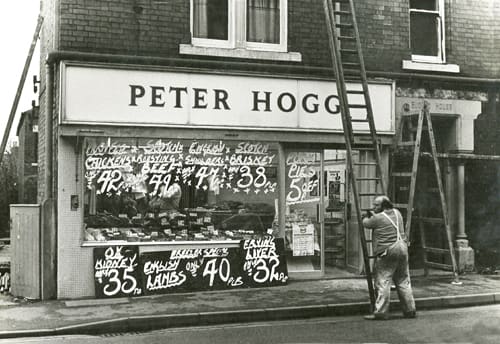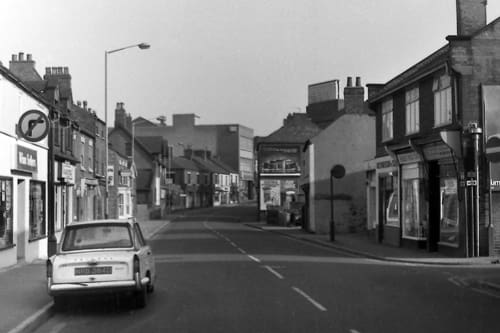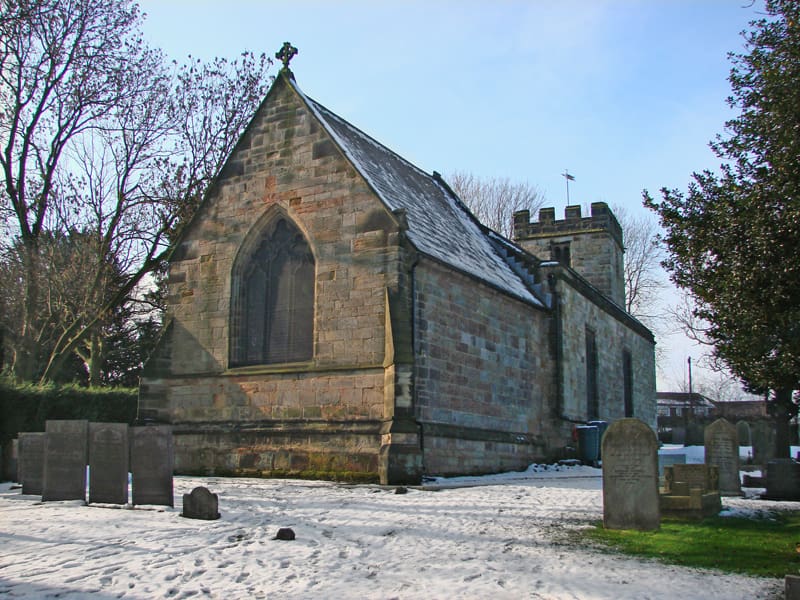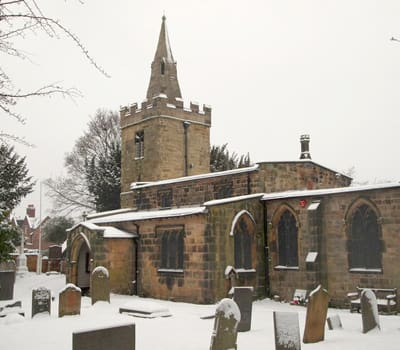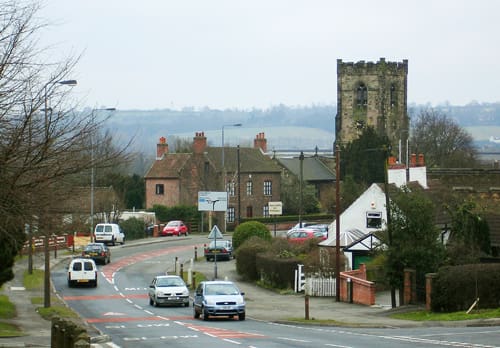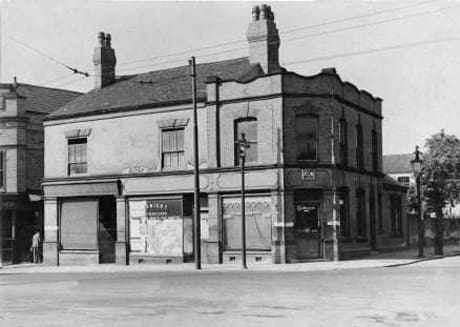
This block stood on the corner of South Street and Wharncliffe Road until 1937 when it was demolished to make way for an extension to the Cooperative Department Store. It once contained a Post Office, Joseph Wright’s barber shop and the Bon Bon Shop.
Though not a particularly attractive scene, this picture from around 1912 shows the entrance to one of the many alleys and yards which led off the main streets of the town. To the right is the old Post Office which closed in 1925 but was replaced by a new building on Burgin’s Yard on the opposite side of the street. After its closure as a Post Office, the building was used as a Spiritualist Meeting House. The late 1930’s extension to the Co-op took this site and occupied the corner up to Wharncliffe Road.
The British Army purchasing horses on Burgin’s Yard off South Street at the beginning of the Great War. The rear of Ilkeston Library can be seen centre and right, while the part of the frontage of the Ilkeston Cooperative store is to the left. In 1926 a new Post Office would be built on this site replacing the earlier one shown above.
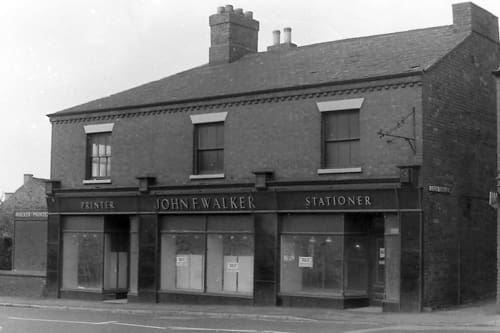
The cottages which stood on the corner of South Street and Coronation Street until early 1936 when they were demolished to make way for the new Ritz Cinema which opened in 1937. Note the posters advertising films being shown at the New Theatre, The Scala and the Kings.
The cottages in the Wide Yard pictured shortly before their demolition circa 1972. The raised brickwork at both gable ends point to the fact that this roof was once thatched.
The cottages on Robey Yard, another of the yards which led off the town’s main streets. Robey Yard, along with the cottages shown below, were demolished just after the 1914-18 War. The site is presently occupied by the South Street Medical Centre.
The other side of the entrance into Robey Yard photographed around 1914. Though many of these old buildings were earmarked for demolition before the outbreak of war in 1914, many remained until the mid 1930s.
South Street Wesleyan Chapel. Built in 1845 and capable of seating upwards of 600 people. Despite attempts to save the building and utilise it for other uses, it was demolished in 1968.
The junction of South Street and White Lion Square pictured in the early 1960s with the buildings adjacent to Robey Yard on the left and Graves’s electrical store on the right.


